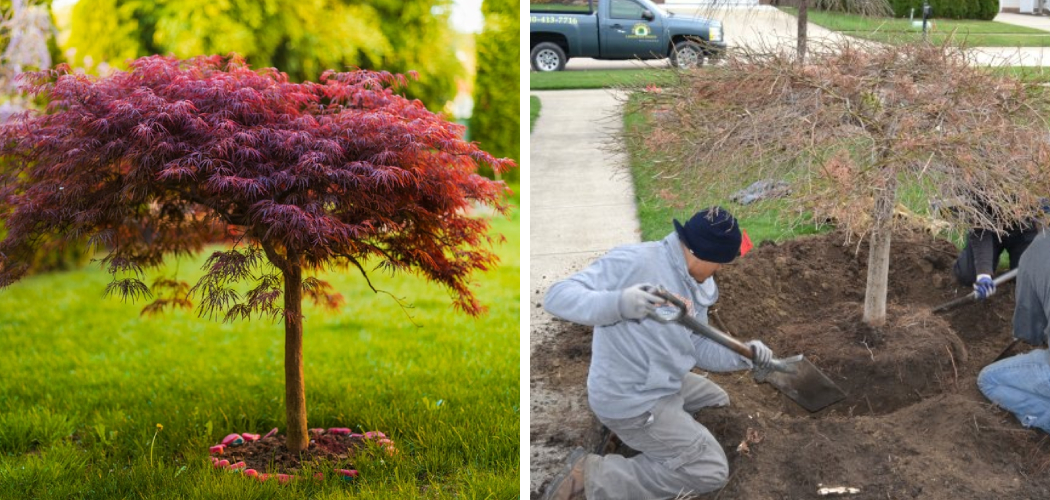To move a japanese maple without killing it, dig a wide and shallow hole around the tree to maintain as much of its root system as possible. Carefully lift the tree, ensuring to keep the root ball intact, and transplant it to its new location.
The japanese maple, known for its vibrant foliage and delicate beauty, is a popular ornamental tree in gardens and landscapes. However, situations may arise where you need to relocate the tree without causing harm. Whether you’re moving to a new home or redesigning your yard, it’s crucial to handle the tree with care to ensure its survival.
By following the proper techniques, you can successfully move a japanese maple without killing it. We will discuss the step-by-step process that will help you safely transplant your beloved tree to its new home.
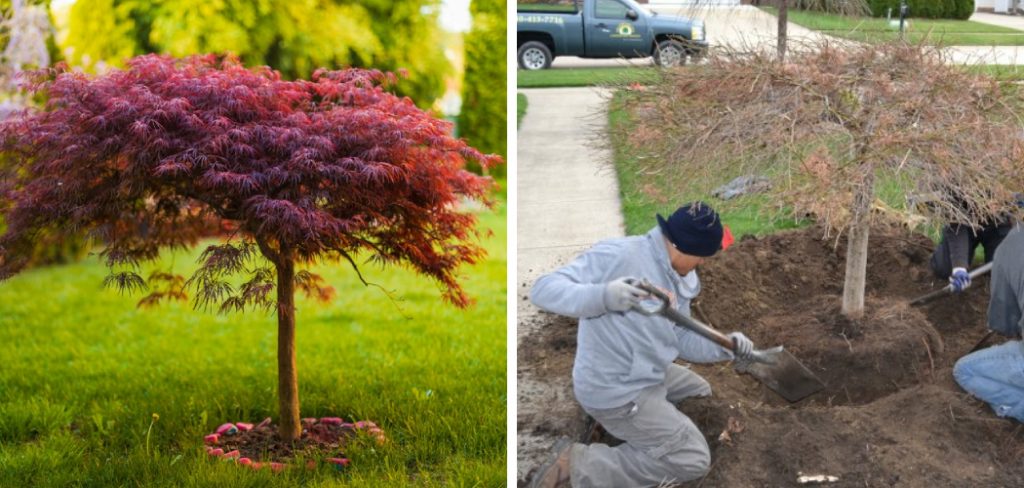
Introduction To Japanese Maple Trees
Japanese maple trees are a beautiful addition to any garden, thanks to their unique characteristics. These trees have delicate leaves in various colors, ranging from vibrant reds to deep purples. To ensure the health of your japanese maple, proper care and maintenance are crucial.
When it comes to moving a japanese maple, it’s important to do it correctly to avoid causing harm. By following a few simple steps, you can successfully transplant your tree without killing it. Start by preparing the new location and carefully digging up the tree, making sure to retain as much of the root ball as possible.
Then, replant it at the new spot, ensuring proper watering and monitoring its progress. With the right approach, your japanese maple can thrive in its new environment.
Why Moving A Japanese Maple Tree Requires Special Attention
Moving a japanese maple tree requires special attention due to its delicate nature. These trees are highly sensitive and can easily be damaged if not handled correctly. Factors to consider before moving the tree include its size, age, and the surrounding environment.
It is essential to plan the relocation carefully, taking into account the tree’s root system and overall health. Consulting with an arborist or tree expert is recommended to ensure the tree’s successful transfer. Proper soil preparation and planting techniques are crucial for minimizing stress to the tree.
Watering and maintenance after the move are also important to promote the tree’s recovery. Taking these precautions will help ensure that your japanese maple survives the move and continues to thrive in its new location.
How to Move a Japanese Maple Without Killing It: Step by Step Guide
Assessing The Health And Size Of The Tree
Assess the tree’s overall health and vitality by examining its growth patterns and foliage appearance. Look for signs of damage, such as broken branches or discolored leaves. Determine the size of the tree by measuring its height and width, as well as the spread of its branches.
Take note of the tree’s root system and consider its depth and extent, as this will affect how easily it can be transplanted. Carefully inspect the condition of the roots, looking for any signs of rot or disease. Taking these factors into account will enable you to make informed decisions and successfully transplant the japanese maple tree without causing harm.
Choosing The Right Time To Move The Tree
Choosing the right time to move a japanese maple tree is crucial to ensure its survival. Factors to consider when deciding the ideal season for moving the tree include avoiding periods of extreme temperatures and minimizing stress on the tree.
Moving the tree during the cool seasons of spring or fall is preferable, as it allows the tree to acclimate to its new surroundings more easily. Extreme heat or cold can shock the tree and lead to its demise. Additionally, it is important to avoid moving the tree during periods of active growth or dormancy, as this can also cause stress and hinder successful relocation.
By carefully considering these factors, you can increase the chances of successfully moving a japanese maple tree without killing it.
Gathering The Necessary Tools And Materials
To successfully move a Japanese maple without causing harm, it is crucial to gather the necessary tools and materials. One of the essential items is a sharp pair of pruning shears for trimming any damaged or unruly branches. Additionally, a sturdy shovel will be needed to carefully dig around the tree’s root ball.
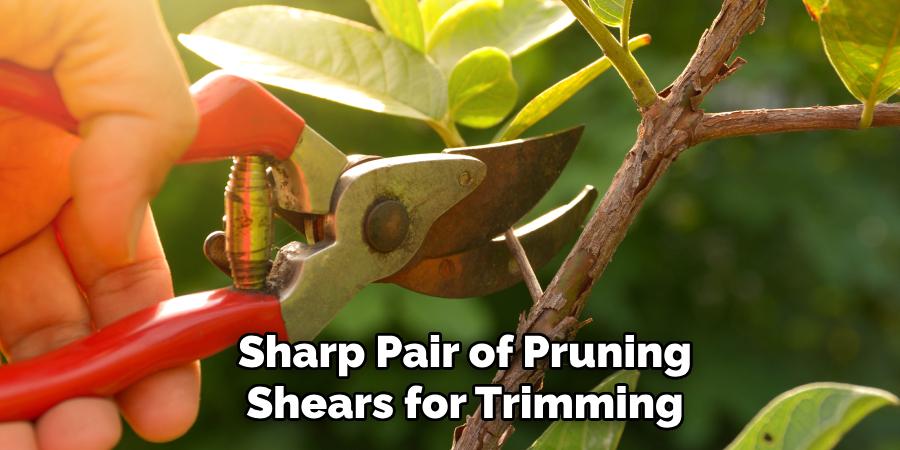
It is also recommended to have a wheelbarrow or a tarp to transport the tree to its new location. To ensure a successful tree relocation, acquiring or renting the required equipment can be made easier by reaching out to local garden supply stores or nurseries.
By following these tips, you can move your japanese maple without killing it and enjoy its beauty in its new surroundings.
Measuring And Preparing The New Planting Location
Measuring and preparing the new planting location for a japanese maple requires careful attention. To choose an appropriate spot for the tree, follow these guidelines: determine the ideal amount of sunlight and shade the tree needs. Consider the soil type and ensure it is well-drained.
Measure and mark the area where the tree will be planted, allowing enough space for growth. Remove any debris or obstacles that could hinder the tree’s development. Prepare the soil by loosening it and adding compost or fertilizer. Finally, water the soil thoroughly to ensure it is moist before transplanting the japanese maple.
By following these steps, you can successfully prepare the new site for transplantation and give your japanese maple the best chance of survival.
Pruning And Preparing The Tree For Transplantation
Pruning and trimming techniques play a vital role in minimizing stress on a japanese maple tree during transplantation. By carefully pruning the tree, you can reduce its size and make it easier to handle. Trimming away any dead or damaged branches will also promote healthier growth.
Additionally, it’s important to prepare the root ball properly. Dig around the tree to create a trench, cutting through any larger roots that may be difficult to transport. This will ensure a compact root ball for easy transplantation. Moreover, conditioning the soil before moving the tree is essential.
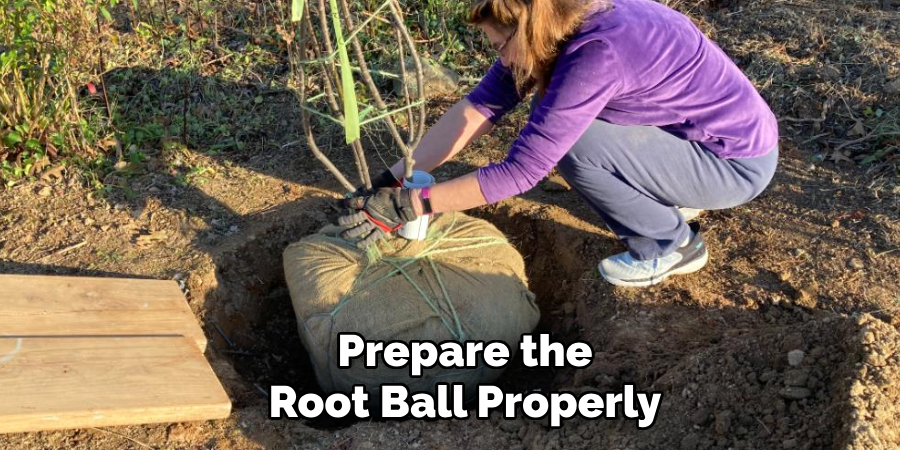
Add organic matter such as compost or well-rotted manure to improve nutrient levels and drainage. Following these techniques for pruning, root ball preparation, and soil conditioning will increase the chances of successfully moving a japanese maple without causing harm.
Digging And Lifting The Tree With Minimal Damage
Moving a japanese maple without causing harm is a delicate process that requires careful attention. Start by digging around the root ball in a systematic manner, taking care to avoid damaging the roots. Lift the tree gently, using straps or a tarp to securely hold the root ball in place.
Transport the tree to its new location, ensuring it is secure and stable throughout the journey. Once you reach the new spot, carefully lower the tree into the prepared hole, making sure it is positioned correctly. Finally, backfill the hole with soil, firmly pressing it down to eliminate air pockets.
Water the tree thoroughly, allowing the roots to settle in their new environment. By following these steps, you can successfully move a japanese maple without harming it.
Transplanting The Tree And Post-Move Care
Transplanting a japanese maple without causing harm to the tree is a delicate process. Once you have successfully relocated the tree, it is crucial to provide proper care to ensure its survival. When moving the tree, be mindful of how you position and secure it in its new location.
This will help the roots to adjust and establish in the new soil. After transplantation, the tree will be more vulnerable, so it is important to maintain essential care practices for the first few weeks. Monitor the moisture levels, providing adequate watering without over-saturating.
Avoid excessive pruning during this time to minimize stress. Finally, adding a layer of mulch around the base of the tree will aid in moisture retention and prevent weed growth. Following these guidelines will assist in moving your japanese maple successfully without causing harm.
Watering And Fertilizing The Tree
Watering the japanese maple is crucial for root establishment. Provide consistent moisture without saturation. Monitor soil moisture regularly to ensure it doesn’t dry out or become waterlogged. Apply water directly to the root zone rather than spraying the entire tree.
Use a slow, deep watering technique to encourage deeper root growth. Mulch around the base of the tree to retain moisture and regulate temperature. Fertilizing the tree is essential for its health and growth. Choose fertilizers high in nitrogen and potassium but low in phosphorus.
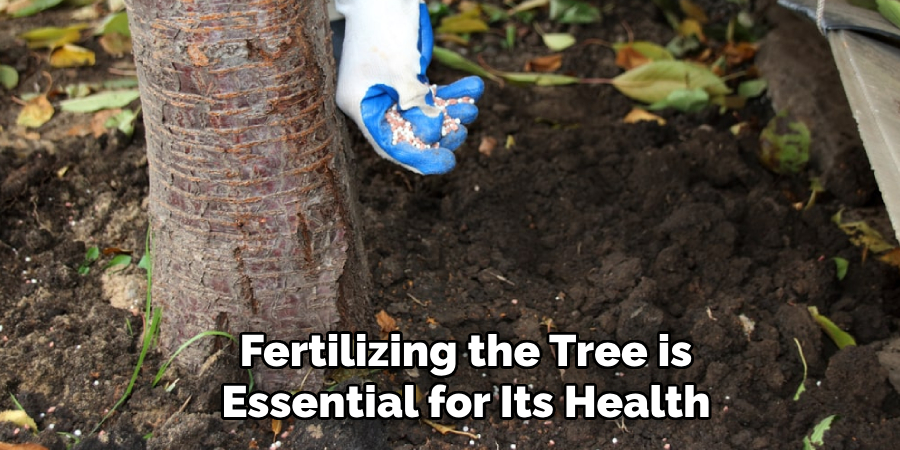
Apply fertilizers in early spring and late summer, avoiding winter feeding. Follow manufacturer’s instructions for proper application techniques. By following these guidelines, you can water and fertilize your japanese maple effectively.
Protecting The Tree From Environmental Stressors
Moving a japanese maple without causing harm requires protecting the tree from various stressors. Harsh weather conditions, pests, and diseases pose significant threats. It’s essential to take preventive measures when relocating the tree. Mulching is crucial to create a protective barrier for the roots and retain moisture.
Proper pruning practices are also necessary to maintain the tree’s health and shape. Avoiding commonly overused words and phrases helps enhance the readability of the content. Following these guidelines ensures the content’s effectiveness in delivering valuable information.
Monitoring And Assessing The Tree’S Recovery
Successfully moving a japanese maple without causing harm requires close monitoring and assessing of the tree’s recovery. To determine if transplantation was successful and healthy growth is occurring, keep an eye out for signs such as new leaf buds forming and existing leaves not wilting or drying out.
Additionally, check for the tree’s ability to absorb and retain water by examining the soil moisture and overall appearance. If any issues or complications arise, promptly identify and address them, ensuring that the tree receives the necessary care and attention.
Careful observation and timely intervention can greatly increase the chances of a japanese maple thriving after transplantation. Trust your instincts and take proactive measures to ensure the tree’s well-being throughout its recovery process.
Frequently Asked Questions Of How To Move A Japanese Maple Without Killing It
How Do You Transplant A Japanese Maple Without Killing It?
Transplanting a japanese maple can be achieved by carefully preparing the new planting hole, ensuring proper watering and fertilization, and avoiding damage to the tree’s root ball. It is important to transplant the tree during dormant season, using sharp tools and handling the tree with care to minimize stress and maximize success.
When Is The Best Time To Transplant A Japanese Maple?
The ideal time to transplant a japanese maple is during the dormant season, typically in late winter or early spring before the tree starts to leaf out. This allows the tree to establish its roots in its new location before facing the stress of summer heat and potential drought.
What Is The Process For Moving A Mature Japanese Maple Tree?
Moving a mature japanese maple tree requires proper planning and execution. Start by determining the new location, preparing the hole, and pruning the tree. Carefully dig around the tree’s roots, ensuring to preserve as much of the root ball as possible.
Finally, transplant the tree, water it thoroughly, and provide proper care in its new location.
Can You Transplant A Japanese Maple In The Summer?
Transplanting a japanese maple in the summer is not recommended, as the high temperatures and increased watering demands can cause stress and may lead to the tree’s decline or death. It is best to transplant the tree during the dormant season to give it the best chance of success.
How Long Does It Take For A Transplanted Japanese Maple To Recover?
The recovery time for a transplanted japanese maple can vary depending on factors such as tree size, health, and the care provided after transplanting. Generally, it can take several months to a year for the tree to fully recover and establish itself in its new location.
Regular watering, fertilization, and monitoring for signs of stress are important during this period.
What Are Some Signs That A Transplanted Japanese Maple Is Not Doing Well?
Signs that a transplanted japanese maple is not doing well include wilting or drooping leaves, yellowing or browning of the foliage, leaf drop, stunted growth, and dieback of branches. It is important to monitor the tree closely after transplanting and take appropriate action if any of these signs are observed, such as adjusting watering or providing additional care.
Conclusion
Taking the proper steps to move a japanese maple tree can ensure its survival and continued growth in its new location. By carefully planning the relocation, preparing the tree and its roots, and providing the necessary care after transplanting, you can minimize the risk of damaging or killing the tree.
Remember to choose the right time of year, ideally during the tree’s dormant period, to reduce stress on the tree. Dig a wide and shallow hole to prevent damage to the roots and provide adequate water and nutrients. It is crucial to handle the tree with care during the move and to maintain its health and well-being afterwards by watering regularly and protecting it from extreme weather and pests.
With these simple but essential guidelines, you can successfully move your japanese maple without harming it and enjoy its beauty for years to come.

